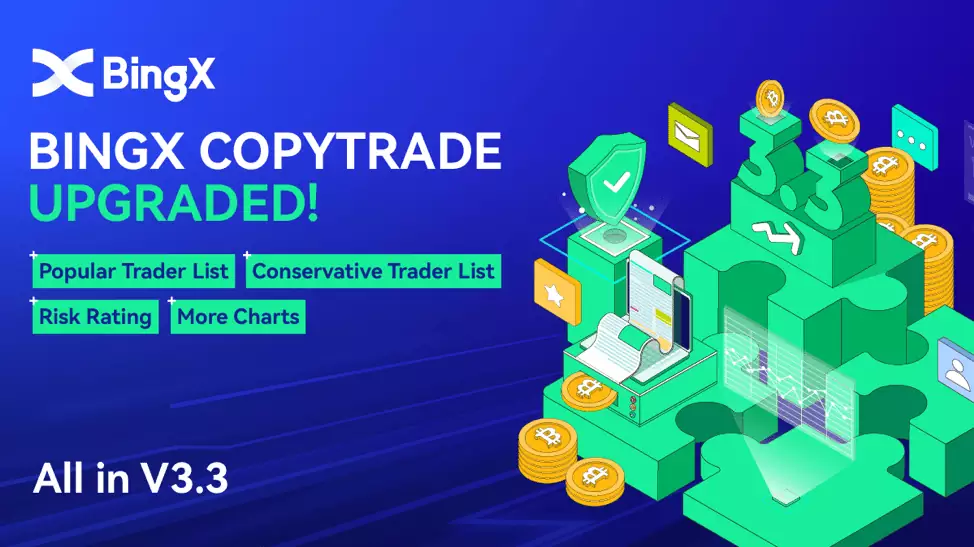Exchanges play a critical role in the cryptocurrency ecosystem, but issues arising from a lack of transparency have become apparent in recent years. That's where Proof of Reserves (PoR) comes in.
This article explores the significance of Proof of Reserves for exchanges, its definition, its importance, and the exchanges that have implemented it.
Proof of Reserves Explained
Proof of Reserves (PoR) is a method employed by exchanges to demonstrate that they genuinely hold the funds they claim to possess. This verification is essential as it instills confidence in users that their assets are secure and can be withdrawn from the platform when desired. The Proof of Reserves process typically involves exchanges offering evidence of their reserves through either auditors or allowing users to independently verify them.

Auditors may be engaged, where independent auditing firms review the exchange's financial records to confirm the amount of assets held. They meticulously examine bank account statements and official documents to ensure the reported assets align with the actual reserves.
Some exchanges opt for a more transparent approach by enabling users to directly verify their reserves. This can be achieved through cryptographic proof, such as digital signatures, or a live dashboard displaying the exchange's held funds.
Importance of Proof of Reserves
Proof of Reserves holds great importance for the cryptocurrency ecosystem. Let's explore the reasons why PoR is crucial.
Ensuring Liquidity: Proof of Reserves primarily ensures the liquidity of cryptocurrency exchanges. By providing transparent proof of reserves, exchanges can demonstrate their possession of sufficient assets to guarantee users' deposits and withdrawals.
Detecting Fraud or Mismanagement: PoR is vital in detecting and preventing fraud or mismanagement in cryptocurrency exchanges. By verifying the actual existence of reserves, PoR helps identify cases where exchanges commit fraud by overstating their reserves, claiming to hold more assets than they truly possess. Such fraudulent behavior can lead to severe consequences, including insolvency and loss of user funds, as exemplified by the case of FTX where mismanagement resulted in user funds being used for other projects without their knowledge. The collapse of FTX resulted in significant user fund losses that could have been prevented had Proof of Reserves been implemented.

Regulatory Compliance: With increasing regulatory requirements imposed on cryptocurrency exchanges, Proof of Reserves has gained significance. Governments across various countries are imposing strict regulations to combat money laundering, ensure customer protection, and promote a secure cryptocurrency ecosystem. Implementing robust Proof of Reserves mechanisms helps exchanges demonstrate compliance with these regulations and establishes a framework for accountability. This has become a pressing issue since the collapse of FTX.
Trust: The aforementioned reasons collectively contribute to the primary purpose of Proof of Reserves: trust. PoR plays a crucial role in building and maintaining trust within the cryptocurrency ecosystem. By implementing transparent mechanisms to verify reserves, exchanges demonstrate their commitment to safeguarding users' funds.
The cryptocurrency industry requires reliable platforms to thrive in the long run. New users must feel confident in placing their money in a secure place. Trustworthy exchanges that implement Proof of Reserves encourage wider adoption of cryptocurrencies, particularly among institutional investors who value transparency and accountability.
Advantages and Challenges of Proof of Reserves
Let's consider the advantages and limitations of Proof of Reserves. The benefits include:
Enhancing Trust: Proof of Reserves instills trust and confidence in the user community by providing transparent evidence of reserve funds.
Ensuring Payment Ability: PoR verifies the payment ability of exchanges, preventing non-payment situations and bankruptcy, and safeguarding users from potential losses due to mismanagement or fraud.
Detecting Fraud: Proof of Reserves helps identify cases of fraud or mismanagement in exchanges by verifying the actual existence of reserve funds.
Market Stability: PoR contributes to market stability by reducing risks of market manipulation, ensuring exchanges have sufficient reserves to fulfill commitments, and creating a healthier cryptocurrency ecosystem.
Industry Reputation: Proof of Reserves enhances the reputation of exchanges and the entire cryptocurrency industry, potentially attracting more participants.
Customer Safety: Proof of Reserves prioritizes customer safety by providing an unbiased and accurate picture of an exchange's financial reserves, allowing users to choose exchanges that prioritize the protection of their assets.
There are no inherent limitations to achieving a more reliable and transparent industry. Considering the broader context of the benefits Proof of Reserves brings, any challenges pale in comparison to the positive impact on transparency, trust, and security in the cryptocurrency ecosystem.
Exchanges Implementing Proof of Reserves
Many cryptocurrency exchanges recognize the importance of Proof of Reserves and have started implementing this mechanism to enhance transparency and build trust among users. Notable exchanges that have implemented Proof of Reserves include Binance, Coinbase, OKX, Kraken, and BingX.
BingX, in particular, stands out as a leading social exchange known for innovative features such as copy trading. BingX places great emphasis on the concept of Proof of Reserves and has made significant efforts to ensure transparency and security for its users. To provide additional transparency and trust, BingX has pioneered the publication of a verified Proof of Reserves report by Mazars, a reputable auditing firm. The collaboration between BingX and Mazars enhances trust in the authenticity and accuracy of the published Proof of Reserves.
BingX recognizes the importance of establishing a reliable platform between investors and exchanges, especially considering incidents like the collapse of FTX and resulting losses for customers. BingX aims to restore investor confidence in the cryptocurrency industry by promoting transparency and accountability.
Key Takeaways
- Proof of Reserves ensures that exchanges genuinely hold the funds they claim to have, providing trust and security for users.
- Proof of Reserves can be implemented through auditors or by allowing users to independently verify the reserves.
- Trust is critical for the success of the cryptocurrency ecosystem, and Proof of Reserves plays a vital role in building and maintaining trust.
- The benefits of Proof of Reserves include enhancing trust, ensuring payment ability, detecting fraud, stabilizing the market, industry reputation, and customer safety.
- There are no inherent limitations to achieving a more reliable and transparent industry. Notable exchanges such as Binance, Coinbase, OKX, Kraken, and BingX have implemented Proof of Reserves.
- BingX, a leading social exchange, values Proof of Reserves and has published a verified Proof of Reserves report by Mazars to enhance transparency and trust for its users.
Proof of Reserves and trust remain crucial for the cryptocurrency industry's mainstream adoption and legitimacy. Trust-building becomes increasingly important as the industry matures and aims to attract new users, particularly institutional investors seeking secure platforms.
For BingX, trust is an absolute priority. In the future, BingX aims to set a standard for leading practices in the industry, ensuring the highest level of trust for its customers. By maintaining these standards, BingX paves the way for a robust and trustworthy cryptocurrency ecosystem that benefits users and the entire industry.


